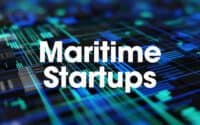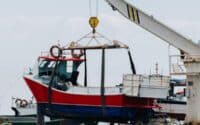Tariffs, Fees & Unfair Maritime Policy: How to Push Back when Necessary

In today’s shifting maritime landscape, not every new regulation or fee lands fairly. From sudden tariff hikes to sweeping compliance rules that ignore on-the-water realities, policies are increasingly shaped without input from the people they impact most. But here’s the truth: even in a global industry, you’re not powerless.
In this article we break down the most effective tools available across key regions—from filing public comments and engaging trade groups to leveraging international organizations. No legal jargon, no fluff—just real-world options to help you protect your business and be heard.
We welcome your feedback, suggestions, corrections, and ideas for enhancements. Please click here to get in touch.
💬 Submit Public Comments
When maritime authorities propose new regulations or amendments, they typically open a window for public input. Engaging in this process not only amplifies your voice but also contributes to more balanced and effective policymaking.
| Guidelines for Submitting Public Comments by Region | |
|---|---|
| Region | Public Comment Submission Process |
| North America (U.S., Canada) |
United States: Agencies like the U.S. Coast Guard publish proposals in the Federal Register. Comments can typically be submitted through the centralized regulations platform or by mail. Canada: Proposed regulations appear in the Canada Gazette. Feedback methods vary but usually include email or submission portals, depending on the department. |
| Europe (EU, UK) |
European Union: Public consultations are available through the EU Commission's official platforms. Respondents can submit comments on maritime policy drafts during the open window. United Kingdom: Draft maritime regulations are posted on official government sites under consultations. Submissions are often via email or form, with supporting evidence welcomed. |
| Asia (China, Japan, Singapore, etc.) |
China: Some ministries allow feedback on draft maritime rules, usually in Chinese. Transparency and access may vary by agency. Japan: Public comment periods for draft laws, including maritime topics, are accessible via the national e-government system. Singapore: Maritime authorities sometimes post proposals and invite industry comments directly via their websites. |
| Russia & CIS |
Russia: Draft maritime-related policies are published through a centralized system. Comments can be submitted electronically, though processes may be in Russian only. Other CIS countries: Participation depends on national regulatory structure. Maritime stakeholders often rely on industry groups to coordinate input. |
| Middle East | Public comment processes vary. Countries like Saudi Arabia use digital platforms for legislative input, while others rely on ministry websites or official gazettes. Maritime authorities sometimes consult industry leaders directly rather than open calls. |
| Latin America |
Brazil: Uses centralized digital systems for public input, including maritime-related legislation. Mexico: Regulations are published in national journals. Stakeholders should monitor transport or maritime agency channels for comment opportunities. |
| Africa | Systems vary widely across the continent. Some countries provide consultation periods through transport ministries. In many cases, maritime chambers or industry coalitions act as intermediaries to submit collective feedback. |
| Oceania (Australia, NZ) |
Australia: Maritime regulations open for comment are listed on national consultation portals. Submissions are usually digital and open to both individuals and businesses. New Zealand: The Ministry of Transport and Maritime NZ invite public feedback through official notices and online forms. |
🤝 Engage with Industry Associations
Maritime policy doesn't happen in a vacuum—and you don’t have to go it alone. Industry associations give shipowners, logistics firms, port operators, and suppliers a collective voice. These groups are often in direct dialogue with regulators and are well-positioned to shape new rules before they ever become law. Engaging with the right associations can amplify your concerns, keep you informed, and help you build influence over time.
| Key Industry Associations by Region | |
|---|---|
| Region | Industry Association Insights |
| North America (U.S., Canada) | The Chamber of Shipping of America and the American Bureau of Shipping are highly engaged in U.S. maritime policy. Canada has the Chamber of Marine Commerce. These associations often meet directly with lawmakers and submit joint comments. |
| Europe (EU, UK) | In the EU, groups like ECSA (European Community Shipowners’ Associations) regularly consult with the European Commission. The UK Chamber of Shipping plays a similar role domestically, particularly in post-Brexit regulation. |
| Asia (China, Japan, Singapore, etc.) | Asian shipowners often coordinate through national organizations like the Japanese Shipowners’ Association, China Shipowners’ Association, or the Singapore Shipping Association. These bodies influence port, tax, and environmental policies in their regions. |
| Russia & CIS | Associations such as the Russian Chamber of Shipping and regional maritime unions provide a conduit to ministries and state-owned enterprises involved in shipping regulation and infrastructure. |
| Middle East | Countries like the UAE have robust organizations such as the Emirates Shipping Association. These groups work closely with port authorities and customs bodies on regional issues like trade flows and security. |
| Latin America | Industry groups like the Latin American Shipowners Association (LASA) and national port councils coordinate responses to regional shipping challenges. Associations often serve as the key voice during consultations. |
| Africa | African regions tend to organize through national maritime chambers or port councils. Pan-African bodies like PMAWCA (Port Management Association of West and Central Africa) are increasingly influential in port and trade policy. |
| Oceania (Australia, NZ) | Australia has Shipping Australia Limited, which often issues policy recommendations. In New Zealand, Maritime Industry New Zealand acts as a liaison between the private sector and regulators on everything from safety to emissions rules. |
🏛️ Contact Lawmakers or Government Officials
When policies start to lean the wrong way, sometimes the most powerful move is the old-school one: direct outreach. Whether it's local representatives, maritime authorities, or high-level policymakers, many are surprisingly receptive—especially when you speak their language: jobs, safety, and regional impact. Reaching out can influence proposed rules, delay harmful legislation, or even open the door for future collaboration.
| Strategies for Contacting Lawmakers or Officials by Region | |
|---|---|
| Region | Approach & Considerations |
| North America (U.S., Canada) | In the U.S., congressional representatives and state legislators often have staff assigned to industry issues. Meeting requests, formal letters, and coordinated campaigns through trade groups are effective. In Canada, MPs and provincial officials can be approached similarly, especially through industry-supported delegations. |
| Europe (EU, UK) | In the EU, contact with Members of the European Parliament (MEPs) can influence committee discussions, especially those on transport and the environment. National ministers also hold sway on Council votes. In the UK, direct outreach to MPs—especially in port cities—can have outsized impact. |
| Asia (China, Japan, Singapore, etc.) | In Japan and Singapore, industry associations are typically the channel to lawmakers. In China, direct lobbying is rare; state-linked bodies and official roundtables are the best path. Respect for hierarchy and formal process is key throughout Asia. |
| Russia & CIS | Formal letters to maritime agencies or ministry officials are the primary method. Industry leaders or associations often speak on behalf of the sector. Face-to-face discussions are highly valued but require careful coordination. |
| Middle East | Ministries of transport and port authorities are the primary contact points. In many cases, building long-term relationships is more effective than public pressure. Use local business councils or chambers to arrange meetings or submit policy concerns. |
| Latin America | Officials are generally accessible, especially when concerns involve trade or job impacts. Letters, policy briefs, or delegations from trade chambers carry weight. It's common to approach both national and regional authorities simultaneously. |
| Africa | Ministry-level contact is essential. In many countries, maritime issues are tied to broader economic development strategies. Coordinated outreach through industry alliances or public-private forums works best. |
| Oceania (Australia, NZ) | In Australia, members of parliament are approachable on industry matters, especially in coastal or logistics-heavy regions. In New Zealand, officials at both the national and regional level often welcome input—just keep it concise and backed by data. |
📺 Use Trade Press and Media
Sometimes the fastest way to get a regulator’s attention isn’t a letter—it’s a headline. Whether it’s a write-up in a respected maritime journal or a LinkedIn post that goes viral in your niche, media pressure works. If enough players speak out publicly about flawed or harmful policy, the conversation can shift fast. And in today’s world, every voice has a platform.
| Media Tactics to Influence Maritime Policy by Region | |
|---|---|
| Region | Media Strategies & Platforms |
| North America (U.S., Canada) | Leverage major maritime outlets. Thought pieces, op-eds, and interviews can generate attention. Don’t overlook LinkedIn posts—especially when tagged to policymakers or industry figures. Local news can help highlight regional impact. |
| Europe (EU, UK) | Use outlets like Lloyd’s List or Hellenic Shipping News for wider reach. In the UK, regional newspapers still matter, especially in port cities. For EU-wide issues, joint press releases from multiple companies or associations have more weight. Use media to frame the economic or environmental downsides of proposed rules. |
| Asia (China, Japan, Singapore, etc.) | In Japan and Singapore, trade press plays a strong role—target journals and industry bulletins. In China, the official press is tightly controlled, but international platforms quoting Chinese firms can still drive influence. Social media is gaining power, especially among younger maritime professionals in the region. |
| Russia & CIS | Industry publications and forums are your best bet. English-language press with Russian shipping stories can influence international stakeholders. Public criticism is rare, but subtle industry messaging does shape opinion. |
| Middle East | Press statements and interviews in trade media like Seatrade Maritime and national business journals are effective. Use business-friendly framing—emphasize the impact on trade or investment. Public-private panels often generate follow-up coverage, which helps amplify concerns. |
| Latin America | Leverage regional maritime magazines and logistics-focused newspapers. Video content and webinars are gaining popularity. For local policy issues, coverage in national dailies—especially when tied to employment or port operations—can trigger faster action. |
| Africa | Stories that highlight community or economic impact can go far. Local maritime-focused radio and newsprint are still widely consumed. Regional digital outlets are on the rise, and interviews with shipping execs or exporters often get strong visibility. |
| Oceania (Australia, NZ) | Australia’s maritime press is tight-knit—use industry-specific media for credibility. In New Zealand, editorials in business sections and maritime trade news help sway opinion. Social media is particularly effective when supported by visuals or real data. |
🔗 Coordinate with Other Affected Stakeholders
Going solo only gets you so far. When a policy hits multiple parts of the industry—like shipowners, freight forwarders, exporters, or port authorities—it’s smart to team up. A unified message from a broad coalition can’t be ignored. Regulators pay attention when they see real alignment across sectors, and a well-timed joint statement or campaign can change the tone of a policy conversation overnight.
| Stakeholder Coordination Strategies by Region | |
|---|---|
| Region | Collaboration Tactics & Insights |
| North America (U.S., Canada) | Create alliances across shippers, terminal operators, and industry unions. U.S. freight and agriculture groups often join forces to push back on tariffs or regulations. Joint letters or coordinated testimonies before Congress or agencies are effective and well-received. |
| Europe (EU, UK) | EU consultation feedback carries more weight when multiple industries sign onto the same message. Coordinate with exporters, transport logistics firms, and environmental groups where appropriate. In the UK, port operators and regional governments often join trade coalitions. |
| Asia (China, Japan, Singapore, etc.) | Industry federations often act as umbrella coalitions. Maritime players in Japan and Singapore frequently align with broader logistics or technology stakeholders. While large Chinese firms may coordinate through official chambers, informal backchanneling also plays a role. |
| Russia & CIS | Cross-sector collaboration is often centralized through national chambers or state-aligned associations. If an issue affects ports, fisheries, and inland logistics, it's usually raised together to regulators, sometimes with industry-wide memorandums or conferences. |
| Middle East | Large logistics parks and free zones often host stakeholder roundtables. Maritime firms coordinate with cargo handlers, trade councils, and customs agents to voice aligned concerns. These efforts are often handled privately but carry significant behind-the-scenes influence. |
| Latin America | Chambers of commerce are key coordination hubs. It’s common for agriculture, manufacturing, and shipping sectors to sign onto shared declarations, especially around port fees or customs reforms. Public-private forums help organize and focus messaging. |
| Africa | Coalitions often form around key corridors or port zones. Regional shipping associations may align with exporters, truck unions, and freight forwarders. Sometimes, a single coordinated campaign gets picked up by regional media and triggers official responses. |
| Oceania (Australia, NZ) | Australia’s transport, mining, and maritime sectors often submit joint feedback to regulators. Stakeholder forums are common, especially when economic growth or job retention is tied to policy shifts. In New Zealand, ports and coastal shippers align messaging via trade councils. |
⚖️ Pursue Legal Action (When Necessary and Feasible)
Sometimes, the only way to push back is through the courts. While it's not always fast—or cheap—legal action can halt harmful regulations, overturn unfair enforcement, or clarify confusing rules. It’s not just about suing the government either. Administrative appeals, tribunal challenges, and procedural reviews can all force agencies to rethink or revise maritime policies. The key? Knowing when and how to engage legal mechanisms in your region.
| Legal Pathways to Challenge Maritime Policy by Region | |
|---|---|
| Region | Legal Strategies & Considerations |
| North America (U.S., Canada) | In the U.S., maritime stakeholders frequently file lawsuits in federal court to challenge new regulations or agency overreach. The Administrative Procedure Act allows for judicial review of most agency decisions. In Canada, judicial reviews and appeals through the Federal Court system are also common, often supported by trade associations. |
| Europe (EU, UK) | In the EU, legal action is typically brought before the Court of Justice of the European Union or national courts. Industry groups sometimes initiate action when EU-level directives are improperly transposed. In the UK, judicial reviews are a powerful tool and frequently used by trade bodies or unions on maritime issues post-Brexit. |
| Asia (China, Japan, Singapore, etc.) | Legal challenges in Asia are less common but not impossible. Japan and Singapore both allow for administrative appeals and limited judicial review. In China, direct legal action against state policy is rare; companies typically pursue behind-the-scenes resolution or arbitration if allowed under commercial law. |
| Russia & CIS | Legal routes are generally state-controlled, but commercial court systems do allow for procedural challenges. Most actions involve appealing enforcement actions rather than policy itself. Industry players often seek quiet settlements through official legal advisors or ombudsman routes. |
| Middle East | Legal challenges are tightly regulated in many Gulf states. Maritime-related lawsuits are possible but often go through administrative tribunals or are mediated directly by ministries. Larger firms may quietly leverage commercial courts for disputes over port fees or customs rules. |
| Latin America | Courts in countries like Brazil and Argentina often hear maritime-related appeals, especially regarding tax, port, or customs regulations. Public-interest litigation is growing in some regions, and companies can file through national or regional courts, sometimes with backing from business federations. |
| Africa | Legal systems vary, but appeals to regulatory decisions are typically routed through administrative courts. In maritime hubs like South Africa, trade unions and shipping companies have used litigation to delay or overturn policy changes. Regional trade blocs like ECOWAS are beginning to offer legal recourse as well. |
| Oceania (Australia, NZ) | Maritime companies in Australia and New Zealand can seek judicial review of government actions. Australia’s Federal Court system has been used to challenge port access rules and environmental approvals. In NZ, legal complaints can be filed through maritime authorities and appealed to national courts. |
🏛️ Join Government Advisory Committees
Want to shape policy before it ever becomes public? Advisory committees are where it happens. These panels—made up of industry experts, union reps, port officials, and technical advisors—give governments hands-on feedback while policies are still being drafted. If you’ve got real-world experience and a solid point of view, you might be exactly who they want at the table. The bonus? Once you're in the room, you stay ahead of every shift coming down the line.
| Government Maritime Advisory Committees by Region | |
|---|---|
| Region | Participation Opportunities & Insights |
| North America (U.S., Canada) | In the U.S., groups like the National Maritime Security Advisory Committee (NMSAC) and MERPAC accept applications from maritime professionals. In Canada, Transport Canada consults with stakeholder working groups and technical panels. Participating gives you advance insight and influence. |
| Europe (EU, UK) | The EU has expert groups under the European Maritime Safety Agency (EMSA) and the Commission's DG MOVE. These groups welcome industry specialists. The UK Maritime Future Technologies Group and similar advisory councils often include shipping company representatives and innovators. |
| Asia (China, Japan, Singapore, etc.) | Japan and Singapore both run working groups that consult industry on port digitalization, safety, and emissions. China’s process is more internal, but state-endorsed industry groups often participate in national policy roundtables that function like advisory boards. |
| Russia & CIS | Government advisory bodies tend to be appointment-based but often include port managers, classification societies, and major logistics players. Participation is typically channeled through state-sanctioned trade bodies or ministry partnerships. |
| Middle East | Countries like the UAE and Saudi Arabia are increasingly inviting private sector players into logistics and maritime advisory forums. Advisory roles may be formal or informal but usually involve close work with ministries or port authorities on key reforms. |
| Latin America | National port and trade councils in countries like Mexico, Brazil, and Colombia often host advisory panels. These include exporters, shipping agents, and terminal operators. Advisory involvement can help shape long-term infrastructure and customs reforms. |
| Africa | Many African maritime authorities are forming technical working groups with help from the African Union and IMO. Ports like Durban and Tema have begun inviting stakeholders into regional development committees. It's a growing space for influence. |
| Oceania (Australia, NZ) | Australia’s Department of Infrastructure and New Zealand’s Ministry of Transport both maintain consultative panels. Committees often include maritime safety, green tech, and port access topics—and are open to qualified industry participants or associations. |
🌏 Leverage International Bodies (IMO, WTO, etc.)
When national policies feel like dead ends, it might be time to go global. International bodies like the International Maritime Organization (IMO), World Trade Organization (WTO), and regional forums can help resolve disputes, mediate standards, or expose policy inconsistencies. For maritime companies operating across borders, these platforms offer a way to elevate concerns—especially when domestic systems are slow or stacked.
| Leveraging Global Organizations to Push Back on Policy | |
|---|---|
| Organization | Role & How to Engage |
| International Maritime Organization (IMO) | The IMO sets global standards for safety, security, and environmental performance in shipping. Industry groups can engage through formal submissions, working groups, and observer status via national delegations or recognized NGOs. |
| World Trade Organization (WTO) | The WTO resolves trade-related disputes, including maritime market access issues. While individual companies can't file cases directly, trade associations or member states can raise discriminatory policies or tariff barriers that affect international shipping. |
| UNCTAD (United Nations Conference on Trade and Development) | UNCTAD monitors global shipping trends and promotes fair maritime policies for developing countries. Stakeholders can contribute research, data, or participate in roundtables. It's especially influential in shaping port reform and logistics efficiency initiatives. |
| OECD International Transport Forum (ITF) | The ITF is a global think tank for transport policy. It hosts regular conferences and publishes frameworks on sustainability and innovation in maritime transport. Industry experts are often invited to panels and research collaborations. |
| International Association of Ports and Harbors (IAPH) | IAPH represents port authorities worldwide and works closely with IMO and UN agencies. Member ports and affiliated stakeholders can influence global port policy and sustainability benchmarks. |
| BIMCO | One of the largest international shipping associations, BIMCO shapes global maritime contracts and regulatory responses. Members get early insight into policy developments and can contribute to position papers submitted to international regulators. |
Pushing back on unfair maritime policies doesn’t require a massive legal team or deep government ties—it starts with awareness, strategy, and action. Whether you're submitting a well-timed public comment, joining forces with industry groups, or elevating your voice through media, every move counts.
Each region has its own way of doing things, but one truth holds everywhere: regulators listen more when the maritime community speaks up early, often, and with unity. From the docks to the boardrooms, shipowners and maritime professionals have more influence than they think—especially when they coordinate across borders and use every tool available.
If a new rule threatens your operations, don’t just accept it. Push back. Speak up. Align with others. And if needed, escalate. The ocean may be unpredictable—but your voice in shaping its rules doesn’t have to be.

Do you have a Maritime Product or Service that may be of interest to Shipowners? Tell us about it here!
Do you have feedback or insights? Please reach out to editor @ shipuniverse.com



